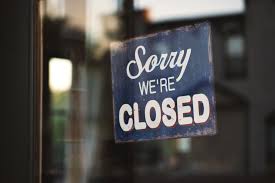After nearly a decade of seemingly toiling in the wilderness in the aftermath of the 2008 financial crisis that claimed two of their powerful brethren—Bear Stearns and Lehman Brothers—and that cost a third, Merrill Lynch, its independence, the financial performance in the second quarter of the two remaining pure-play investment banks, Goldman Sachs and Morgan Stanley, proved that the traditional stronghold of the investment bank—trading stocks and bonds and underwriting stocks and bonds—are alive and well, thank you very much. Underwriting revenue at Goldman was up 107% in the second quarter of 2020, compared to the second quarter of 2019. Trading revenue was up 93%. These are big numbers. (JPMorgan Chase’s investment bank also performed well in the second quarter, with revenues up 54% in the second quarter compared to the same quarter a year earlier.)
“JP Morgan also looks strong,” says Mike Mayo, the longtime Wall Street research analyst, now at Wells Fargo Securities. “But the pure plays, these are the best-performing banks this year, Morgan Stanley and Goldman Sachs…. They’re just more in the right place at the right time. They don’t have the traditional commercial bank revenues as much as others. So they don’t get hurt as much from credit losses and lower interest rates. It’s a double-barreled shotgun that’s aimed at the bank industry, and that’s credit costs and pressure on margins, and they’re less exposed in those two areas.”
And what’s also clear is that the big universal banks—JPMorgan Chase, Bank of America, and Citigroup—had a tougher quarter than Goldman and Morgan Stanley because of the need to take huge loan-loss reserves to account for potential financial losses from loans and credit card balances that aren’t paid off because of the worsening economy. JPMorgan Chase, for one, has taken loan-loss reserves of nearly $20 billion since the start of 2020. Its provision of $10.5 billion in the second quarter, announced on July 14, cut its profit in half year-over-year. “This is not a normal recession,” the bank’s chief executive Jamie Dimon recently said in explaining the loan-loss provisions. “The recessionary part of this you’re going to see down the road.” Goldman, meanwhile, with a loan portfolio of around $110 billion, added $1.6 billion to its loan-loss reserves in the quarter.
There has been a bit of a holy war on Wall Street since the 2008 bloodbath called into question the way Wall Street goes about its business and what form the survivors should take. Lloyd Blankfein, the CEO of Goldman Sachs from 2006 to 2018, long argued that the regulatory and economic changes plaguing Wall Street after the financial crisis were cyclical, not structural. He argued essentially that once things settled down, Goldman would best be able to compete by focusing on its traditional strengths of providing investment banking services—M&A advice, underwriting, and trading—with a twist of wealth and asset management thrown into the mix. There was no need for Goldman, he argued, to edge out into the world of commercial banking, with federally insured deposits, corporate and personal loans, mortgages, credit cards, cash management, interest-rate sensitivity, and the world of trillion-dollar balance sheets.
Morgan Stanley, on the other hand, under James Gorman, its CEO, was less zealous about the “cyclical” versus “structural” debate. He decided quickly to buy the Smith Barney brokerage business from Citigroup as a way to manage money and generate steadier fee income than the notoriously volatile world of trading, underwriting, and M&A advisory. Gorman made a big bet on wealth management that has paid off. Three years ago, Morgan Stanley’s market capitalization passed Goldman Sachs’s for the first time in about a decade. And that is still the case—Morgan Stanley’s stock is valued at around $82 billion; Goldman’s stock is valued at around $73 billion.
